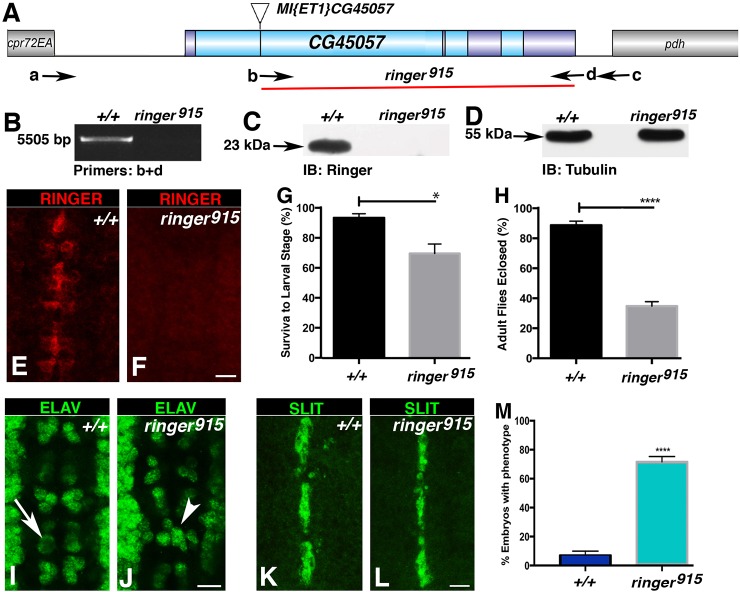Fig. 2.
ringer-null mutants exhibit embryonic nervous system defects. (A) ringer-null mutant generation using Mi-ET1-CG45057[MB04349] and the extent of genomic deletion in ringer915 flies (red line). Exons are in dark blue. a-d indicate a subset of primer pairs used in PCR amplifications to determine genomic deletions. cpr72EA and pdh (gray) are neighboring genes. (B) Deletion size and location confirmation by using PCR analysis. (C,D) Immunoblots (IB) showing loss of 23-kDa Ringer in ringer915 flies (arrow). (E,F) Wild-type midline Ringer expression is absent in ringer915 embryos. (G,H) Viability analyses of ringer915 flies compared to +/+ flies indicates a decrease in mean survival at transitions from embryo to larva (G, *P=0.0211, Student's t-test) and larvae to adult (H, ****P<0.0001, Student's t-test) (n=210). (I,J) ELAV-specific immunostaining at stage 15 in +/+ (I) and ringer915 embryos (J) shows neuronal misplacement and bilateral symmetry errors in mutants (J, arrowhead indicates asymmetry, compare with arrow indicating symmetry in I). (K, L) SLIT-specific immunostaining in +/+ (K) and ringer915 (L) shows unaffected midline glia in ringer mutants. (M) Quantification of embryos with the neuronal misplacement phenotype as a percentage of the population. 71.7%±3.62 (mean±s.e.m.) ringer915 embryos showed changes at stage 16 compared to 7.02%±2.92 in WT (+/+) (n=100, P<0.0001, Student's t-test). Scale bars: 10 μm (E,F,I-L). Error bars are s.e.m.

